1 Netsuke of the Treasure Ship (Takarabune) with the Seven Gods of Good Fortune
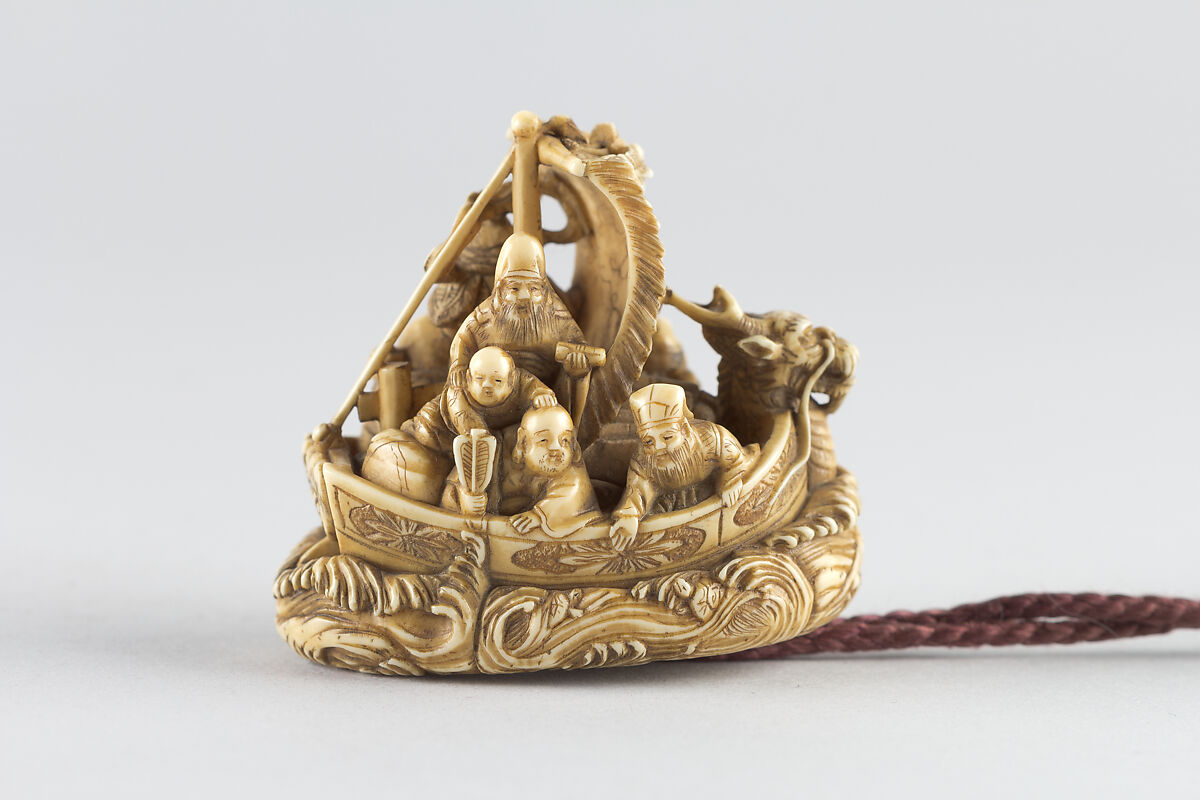
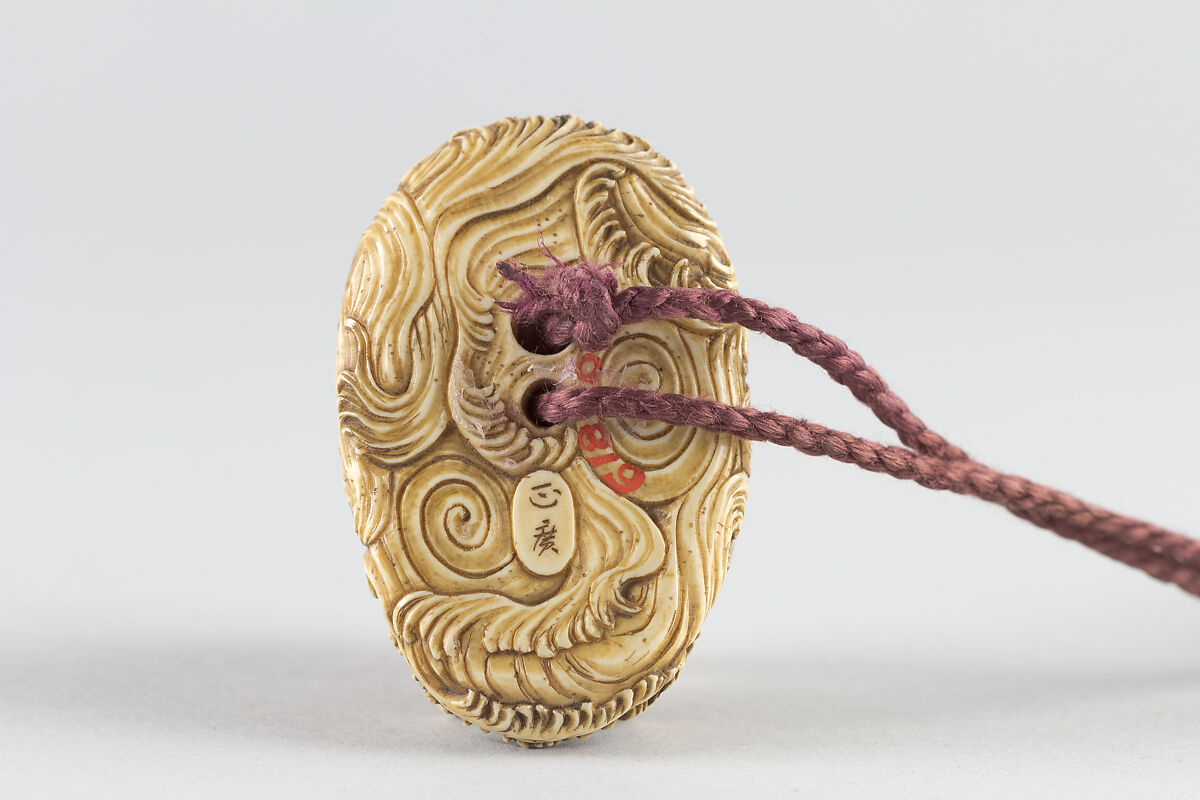
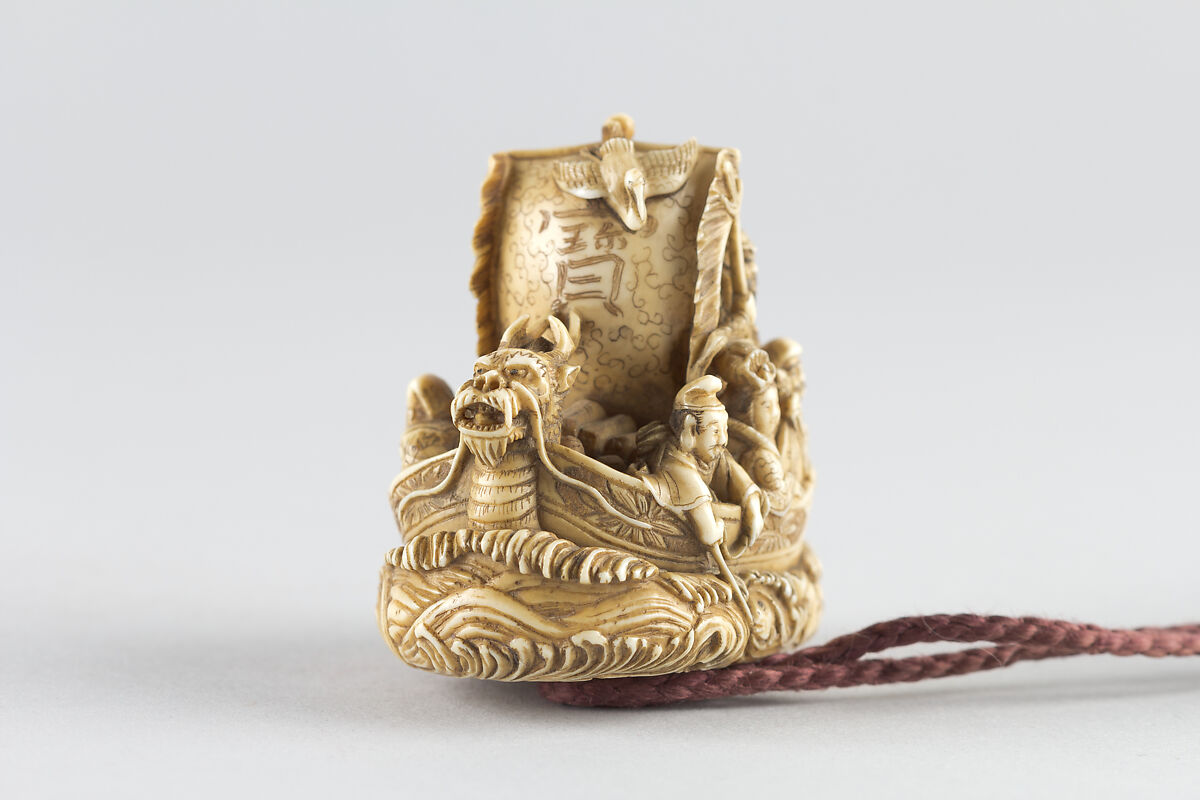
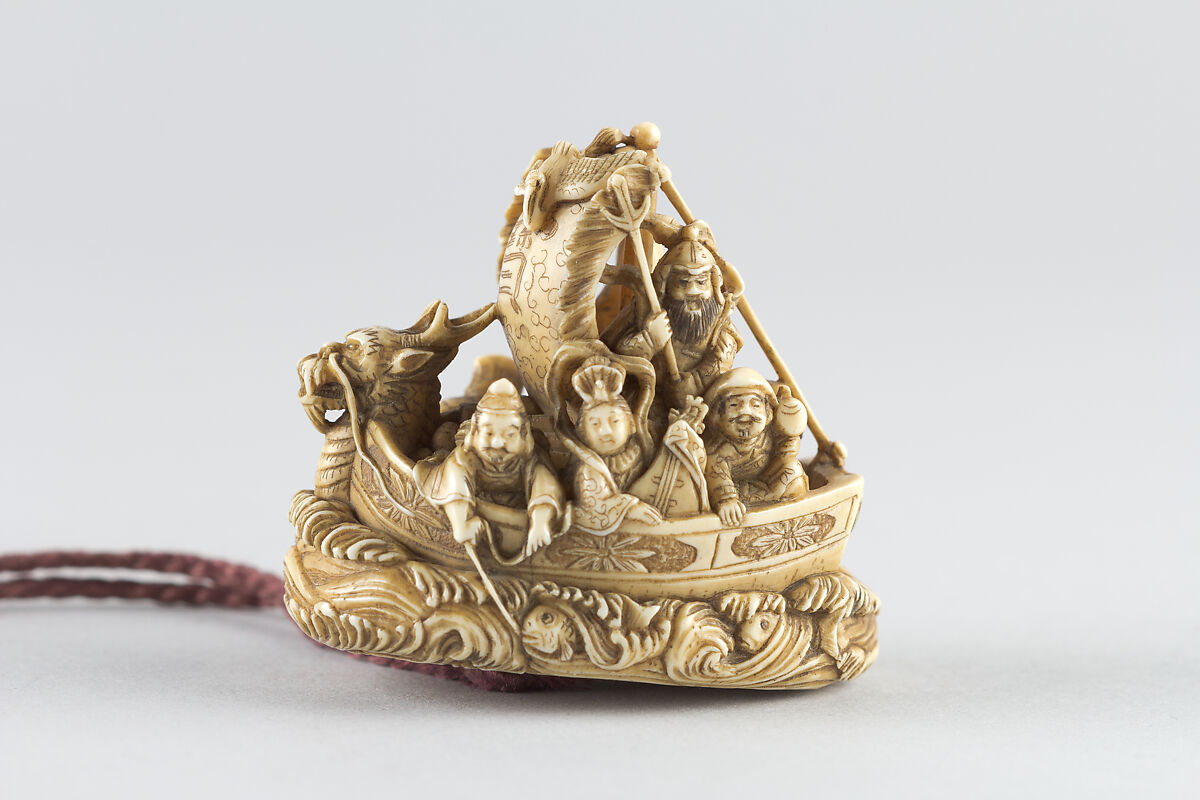
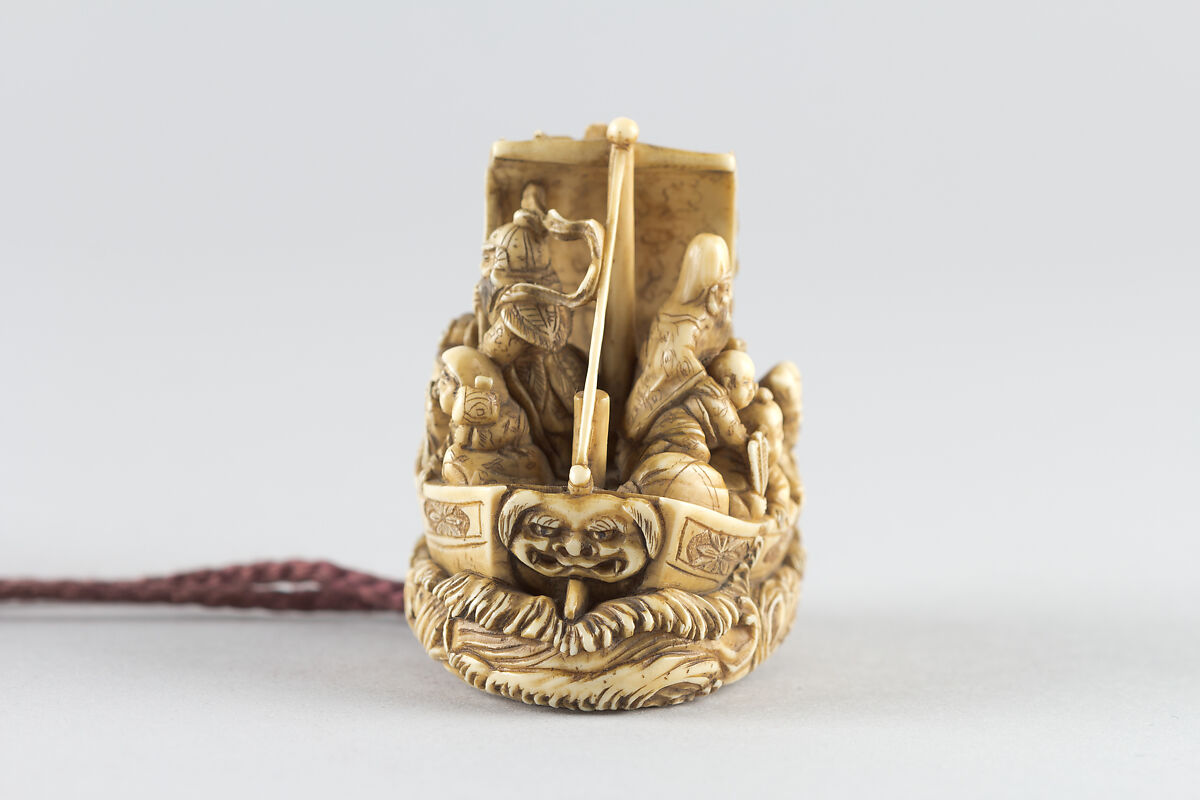
1.1 Key Details
- Estimated Value: $10,000 - $20,000 USD as of 2025 (fair market value); $25,000 - $35,000 USD (replacement cost for insurance)
- Dimensions: 4.8 cm H × 5.1 cm W × 3.2 cm D
- Current Location: Metropolitan Museum of Art (Accession Number 10.211.819)
1.2 Overview
This exquisitely carved ivory netsuke by the Japanese artist Masahiro depicts the Takarabune (Treasure Ship) carrying the Seven Gods of Good Fortune. Created around 1800 during Japan’s Edo period, it represents the pinnacle of miniature sculptural art. The piece served as both a functional toggle for securing personal items to a kimono sash and a portable charm for prosperity and good luck.
1.3 Subject Matter & Iconography
The netsuke portrays the mythical Takarabune, a vessel from Japanese folklore that brings fortune and abundance. Crowded aboard the ship are the Shichifukujin—the Seven Gods of Good Fortune—each deity representing different aspects of a blessed life including longevity, wealth, happiness, and prosperity. The ship features a dramatic dragon-headed prow and a sail bearing the character for “treasure” (宝). Below, stylized ocean waves form the base of the composition.
This imagery holds deep cultural significance in Japanese New Year traditions. According to folklore, placing a picture of the Treasure Ship under one’s pillow on the second night of the New Year would ensure auspicious dreams and good fortune for the coming year. The netsuke thus served as a year-round talisman of these same blessings.
1.4 Cultural & Art Historical Context
Created during the late Edo period (1615–1868), this netsuke reflects the flourishing merchant culture of Japan’s urban centers. While the samurai class valued austerity, the rising chōnin (townspeople) embraced decorative arts that displayed wealth, sophistication, and cultural literacy. Netsuke became essential fashion accessories for men, who used them to suspend tobacco pouches, medicine cases, and other personal items from their kimono sashes.
The attribution to Masahiro places this work within the renowned Osaka School of netsuke carving, known for its technical excellence and refined artistry. The artist’s signature “Hiro” (廣) appears in red stain within a gourd-shaped cartouche on the base—a mark of authenticity that confirms its status as a masterwork. The complex three-dimensional composition, designed to be appreciated from every angle, demonstrates the sophisticated aesthetic standards of Japan’s golden age of netsuke production.